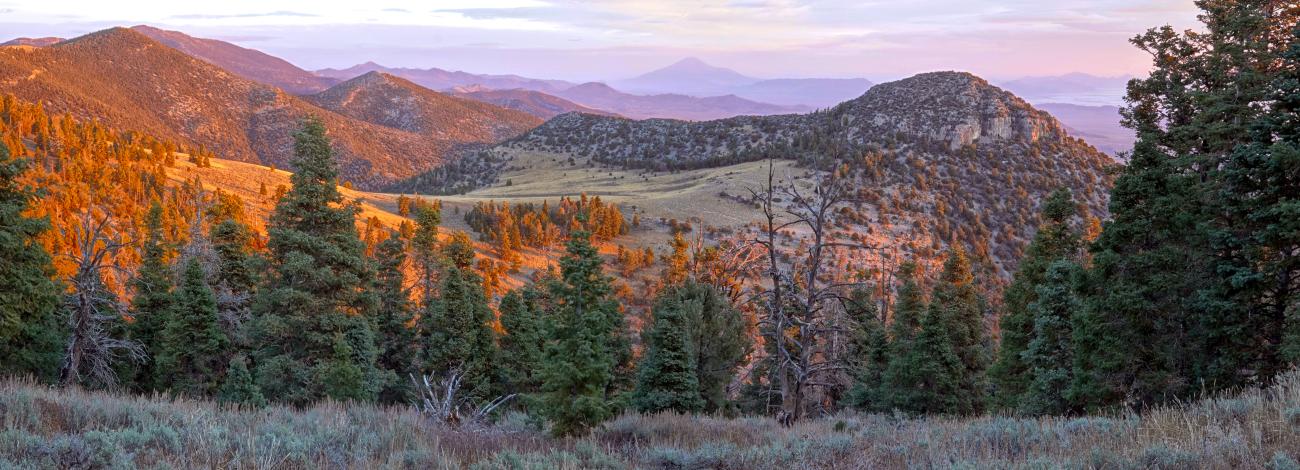
Goshute Peak Wilderness Study Area
Values
The Goshute Peak WSA is extremely rugged with high mountain peaks, rocky limestone cliffs and numerous canyons radiating from the central ridgeline. The majority of the WSA is densely wooded. At lower elevations is a pinyon pine, Utah juniper and mountain mahogany woodland, and at higher north facing elevations are found white fir, limber pine, and bristlecone pine.
From late August through mid October each year, the Goshute Mountains are one of the most productive observation areas for raptors in the West. Thousands of raptors migrate past this range after a long journey across the Great Salt Lake Desert, and spend up to several weeks resting before continuing their trip south. The high concentration of raptors during this time period is the source of scientific studies and important for monitoring species condition. Raptors known to migrate through the Goshute Mountains include sharp-shinned, Cooper’s, broad-winged, red-sholdered, rough-legged, Swainson’s, red-tailed, and Ferruginous hawks, northern Goshawk, American kestrel, merlin, prairie and peregrine falcons, golden and bald eagles, northern harrier, osprey, and turkey vultures.
The WSA provides outstanding opportunities for wildlife observation, hiking, extended backpacking trips, photography, and nature study.
Visitation Information
From Wendover, Nevada, drive south on Alt Highway 93 approximately 24 miles to a Nevada Department of Transportation work station and turn right. Drive past a BLM sign indicating the Goshute Mountains Watchable Wildlife site to an intersection at 1.7 miles and turn right. Drive another 1.2 miles to an intersection and turn left. Drive 1.3 miles to the trailhead parking area. The trail to the top of Mount Pisgah is approximately 2.3 miles long.
Visitor Advisory
The access route will accommodate most passenger vehicles if driven carefully, but a high clearance vehicle is recommended. No water is available in this area, you must carry all the water you will need.
